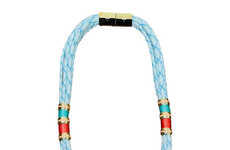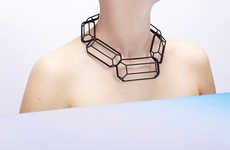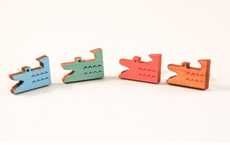
Polli Synthesizes Craft Culture and Industrial Manufacturing
Amelia Roblin — August 8, 2010 — Eco
References: polli.au
Polli is a chic Aussie brand begun by industrial designers Maja Rose and Tess Lloyd.
The two have worked together to produce a colorful collection of fashion and home accessories with an aim to bridge sustainability with industrial production. Their metal earrings, pendants and brooches typify a stenciled aesthetic reminiscent of Danish paper designs with a machine-made crispness and rigidity. Some of their latest styles also incorporate cotton thread and leather accents. Let Polli remind us to pay attention to Australian cutting-edge fashion.
The two have worked together to produce a colorful collection of fashion and home accessories with an aim to bridge sustainability with industrial production. Their metal earrings, pendants and brooches typify a stenciled aesthetic reminiscent of Danish paper designs with a machine-made crispness and rigidity. Some of their latest styles also incorporate cotton thread and leather accents. Let Polli remind us to pay attention to Australian cutting-edge fashion.
Trend Themes
1. Sustainable Fashion - Exploring sustainable materials and production methods in the fashion industry presents disruptive innovation opportunities.
2. Craft Revival - Revitalizing traditional crafts through contemporary design approaches creates opportunities for disruptive innovation in the craft industry.
3. Industrial-scale Customization - Leveraging industrial manufacturing techniques to offer customized products opens up disruptive innovation opportunities in various industries.
Industry Implications
1. Fashion - Integrating sustainability practices and innovative designs into the fashion industry introduces disruptive innovation opportunities.
2. Craft - Combining traditional craft techniques with modern design aesthetics presents disruptive innovation opportunities in the craft industry.
3. Manufacturing - Exploring industrial-scale customization and sustainable production methods in manufacturing leads to disruptive innovation opportunities.
6.3
Score
Popularity
Activity
Freshness























